Adventure
 'I believe any trip in search of wildlife can be coupled with physical activity and elements of cultural diversity to form a thrilling opportunity ' 'I believe any trip in search of wildlife can be coupled with physical activity and elements of cultural diversity to form a thrilling opportunity '
John H.Eickert |
One of the greatest dangers in adventure is going too high too fast. This is not the walking up a short hill too fast, but the ascending to altitude too quickly. One of these can leave a person short of breath. The other
will most certainly kill you. And, it can kill you in two ways. It is possible, if you ascend too quickly for your mind to leak. A leak, which has nowhere to drip, slowly the fluid then builds up in your skull. The pressure increases. A headache begins. Your
feet fail to function. Your tongue looses it's will. The second form of this lurking altitude danger attacks the lungs. They leak, filling with fluid until there is no room for oxygen. Both forms lead certainly to death. Not a quick, ‘before you know it death',
but an ‘Iamgoingtodiecananybodypleasehelpme' death. I have witnessed people die from cerebral edema and pulmonary edema.
One of India 's best provinces for adventure is Zanskar. The area generally south of Leh holds magnificent rivers and glistening mountains. The difficulty of entering the area is the great increase in altitude necessary to reach
Leh from Delhi . To drive to Leh on the Manali highway is seasonal and tedious. Buses make the journey, yet the ride is long, dusty, and bumpy. One can fly to Leh from Delhi in a few short hours, but then there is the danger. To fly to Leh is to invite sickness
and maybe even death. Even the bus ascends so swiftly that in a given season there are a number of passengers who die. Is there a safe way to reach Leh?
As they say, timing in life is everything. It is possible to walk to Leh using an ancient trade route. It is a very long trek and a participant would want to be in the best shape in order to walk six hours every day for three weeks!
The track departs the Manali highway just north of the monastery of Keylong. A trekker would travel over eight passes before reaching Leh. The highest pass is Singi La at 5,060 meters. It is also the first pass to cross. A trekker passes through five high
mountain valley's including the Tsarapchu and Markha. The portion between Taktak Gompa and the Markha valley is the most spectacular. Here you would pass near peaks over 6500 meters in height. Along the way are monasteries, high mountain villages, mani walls,
pastures, fields, and friendly, smiling people. More than once the mountain walker is forced to wade icy rivers in order to continue. This route will take more days to get to Leh than the other two options. You will also be feeling quite fit, though tired,
upon walking into Leh.
There are very few treks I would do more than once. The walking route to Leh is one of them. I hope each of you has the opportunity to try this trip. If you do take the time, well, take your time. Cheers.
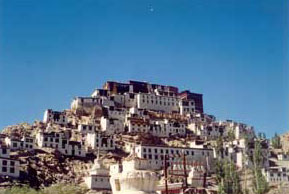
( Photograph of Town in Leh by Thomas Chacko)
Visit
http://www.numbum.net or call NumBum Adventurers at 406-777-2228
|
Amazing Facts About Wildlife
- Dr. Susan Sharma
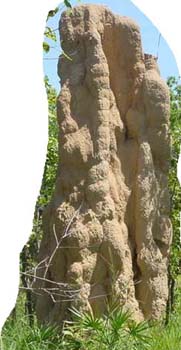 Termite mounds are marvels of engineering. Deep inside, the insects farm a fungus, their only food. It must be kept at exactly 30 degree centigrade, while the temperatures outside can range from 2 degrees at night to 40 degrees
during the day. Termite mounds are marvels of engineering. Deep inside, the insects farm a fungus, their only food. It must be kept at exactly 30 degree centigrade, while the temperatures outside can range from 2 degrees at night to 40 degrees
during the day.
They do it by venting breezes in at the base of the mound, down into chambers cooled by wet mud carried up from water tables far below, and up through a flue to the peak. Toiling with the tireless, compulsive work ethic of all ants,
they constantly dig new vents and plug old ones to regulate the temperature.
Engineers are now beginning to look at the feats of these creatures more closely. Harare in Africa has built an office building taking cooling cues from termites.
In India , our ancestors observed and got inspired by nature in almost everything they did. They built cave homes which had excellent cooling using circulation of air. There is a more recent Hawa Mahal in Jaipur which use natural
air circulation for cooling.
In Uttara Kannada, Huthu (anthill) indicates water at short depths — say within 20 to 25 feet. The reasoning here is that the white ants bring wet soil from not-so-deep in the ground.
Methods to improve the natural durability and strength of the soil – commonly referred to as Soil Stabilization – have been practiced in many countries. Stabilizers such as natural oils, plant juices, animal dung and crushed anthills;
have been used for many centuries in India and African countries. In Zimbabwe , white ants are regarded as beneficial insects and protected because they provide the farmers with cheap natural fertilizer. When applying the soil, farmers ensure that the anthills
are not destroyed in order to rely on them again after some years of recovery. The productivity of the land is reported as having increased.
India 's commercial capital Mumbai, has these structures which are in tune with nature.
|
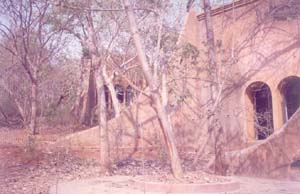
|
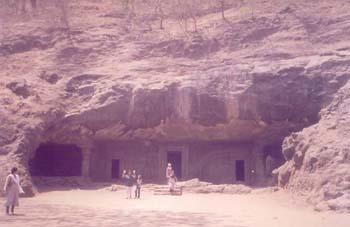
|
|
Conservation Education Centre(BNHS), Goregaon, Mumbai
|
Elephanta Caves , Mumbai
|
|
Answers To Quiz Of The Month
This month no one have given all right answers, greenlifesociety@yahoo.com and scjmainpuri@yahoomail.co.in have given 8 right answers.
Right Answer toQuiz on Gruiformes
|
| 1.`Gruiformes` are the diverse group of birds consisting of |
|
Game Birds |
Cranes, Rails and Bustards |
Waders, Gulls and Auks
|
|
| 2.The birds grouped together as ‘gruiformes’ |
|
Tend to look similar |
Are seen in a particular geographical area |
Share certain anatomical features
|
|
| 3.Several of the world’s cranes are now endangered mainly due to |
|
Drying up of rivers |
Global Warming |
Hunting and land drainage
|
|
| 4.This crane spends the whole year in one locality |
|
Sandhill crane |
Siberian crane |
Sarus crane
|
|
| 5.The smallest of the cranes is |
|
Whooping crane |
Demoiselle crane |
Japanese crane
|
|
| 6.These long legged birds of the open plains are powerful runners. These are |
|
Sarus cranes |
Black necked cranes |
Bustards
|
|
| 7.To court a female he, 1)extends his neck and wings 2) Bows deeply 3) Then approaches the female. Who is he? |
|
The Sarus crane |
The African dancing crane |
The Common crane
|
|
| 8.The purple moorhen ( family :rail) is a common site at |
|
Santragachi, Calcutta |
Okhla Barrage, Delhi |
Sewri Bay, Mumbai
|
|
| 9.These rails get quarrelsome during breeding season. Rival males clash over territory. These are, |
|
| 10.These members of ‘gruiformes’ are small, secretive birds with rounded wings and short tails and the rear toe on each foot missing. These are, |
|
Partridges |
Spur fowls |
Button quails
|
|
|
Burning Issues
Saraswati Kavula
Seetabai the village headman's wife cooked the food for us. It was rice, dal with some curry. It must have taken a lot of effort for them. Our tour fees included paying Rs.20 for hiring a bed per person, cooking and food charges
to the lady and fees for the village men who acted as guides for us in the forest trails. We all stayed inside the local primary school. The villagers were too shy to speak to us. But it was an effort to bridge the gap between the tribal folk and the city
dwellers, to remove the misconceptions and also to use true spirit of eco-tourism to bring some livelihood for the local people. Our discussion continued after the meal. We decided to drop the idea of going into the forest late night as we had to leave early
next morning.
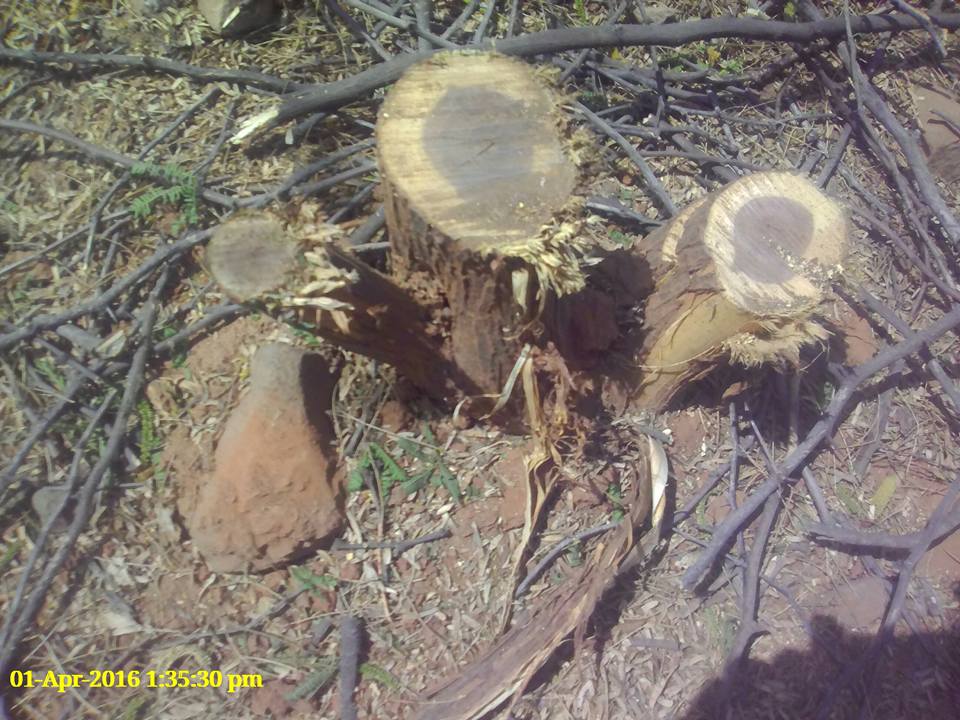 The next day, we started our walk around 7.30am , into the forest surrounding Maisampet and at the edge of the village; there was the VSS *( Vana Samrakshana Samiti-Forest Protection Society) community room. Through the window,
we could see some skins of spotted deer hanging inside the room from the ceiling. “Where are these skins from?” Waheed asked the head man. “They were taken out for the Diwali celebrations!” the headman replied. The next day, we started our walk around 7.30am , into the forest surrounding Maisampet and at the edge of the village; there was the VSS *( Vana Samrakshana Samiti-Forest Protection Society) community room. Through the window,
we could see some skins of spotted deer hanging inside the room from the ceiling. “Where are these skins from?” Waheed asked the head man. “They were taken out for the Diwali celebrations!” the headman replied.
“These are old skins which they use for traditional rituals. Now if there was a journalist, he would have taken a photo of this and immediately with headlines, it would come out in the papers, “Animal hunting under the nose of the
DFO”. The villagers hate us because we tell them to not cut the trees and not to kill wild animals. They see me with suspicion, because I would book cases on them. But the district administration and the ITDA should be strict with them. They keep giving all
kinds of goodies to these people and never bother to make them responsible. But fortunately, this time we have a good collector, she is a lady. She warned the villagers that if they cut the forest their ration and other amenities will be stopped. That is
the way these people should be dealt with”.
Before we could leave the village, he called out our attention; I thought he was going to show us some special bird or something.
“Before we leave the village I wish to show you all something here, look at this village. The houses resemble simple sheds, but just take a closer look; they must have cut at least 20-30 teak trees to make this shed. This is excellent
teak which is judged by its grain and colour. Some fellow from the city when they come and say, why don't you sell it to us, they simply pull down the house and sell it for some money. Then they go into the forest and cut down another 20 trees to make a new
shelter. If we book a case on them, they speak about the tribal rights to the forest. But I think there has to be some line drawn somewhere. The NGO's keep going against the establishment and the press is too happy to give coverage to them. When something
happens here in the forest, it should be brought to our notice. People go to the press directly. Now, I would have no idea what has happened. My boss would read the news in the press and simply ask me to answer or sometimes they suspend people, since there
will be pressure from Hyderabad . There needs to be better understanding between all parties concerned.” He lamented.
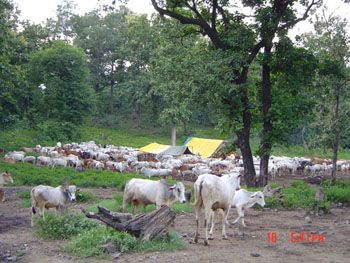 “Sir, you may speak for yourself, but all the people in the department are not like you. Our present DFO of Jannaram Mr. Vinod Babu had been very pro-active; he understood our views and has co-operated immensely in our conservation
work. He was instrumental in removing the unauthorized settlements of the Meena tribe which came in from Rajasthan and simply settled in the middle of the forest with their huge cattle. They are not original tribes of Andhra. But since the lambadas have been
declared scheduled tribes here in A.P, so many of these people from Rajasthan come and settle in this state. But “Sir, you may speak for yourself, but all the people in the department are not like you. Our present DFO of Jannaram Mr. Vinod Babu had been very pro-active; he understood our views and has co-operated immensely in our conservation
work. He was instrumental in removing the unauthorized settlements of the Meena tribe which came in from Rajasthan and simply settled in the middle of the forest with their huge cattle. They are not original tribes of Andhra. But since the lambadas have been
declared scheduled tribes here in A.P, so many of these people from Rajasthan come and settle in this state. But
before that we had to go from pillar to post in the department trying to get people's attention to the issue. Most of the time, the people in the forest department do not know a thing about wild life or eco-systems or about plant
species. What will they protect?” Imran asked him.
-------------------------------------------------------------------------------
Photo credits: Cut trees by Saraswati Kavula
Settlers in the middle of the forest by Asif Siddiqui
*VSS is a grass root community group part of the Joint Forest Management programme of the state government.
( To be continued)
|
News and Views
NEWS………………..
With all major newspapers carrying articles about declining tiger populations, it was natural for the topic of our online chat to be “Tiger census”. The chat was freewheeling with no expert moderating it. I urge you to go through
it. We do not probe into who speaks but listen to what he or she has to say.
Click here to read what we chatted about.
With the arrival of summer ‘Water wars' have erupted in various parts of the country. There are activists raising their voices about cola majors sucking up our ground water to sell in packaged form; there are debates on about
the ethics of pricing water-a natural resource; there is the din of politics in interstate water wars.
Saraswati Kavula continues her trek through the forests of Andhra and tells it all in sequence. The cut trees in her travelogue signify robbed
water of our future generations. If there are no trees, there is no rain, no ground water recharging.
In India , we pride ourselves in leaving a legacy for our children. A portion of our earnings is always kept aside for the son/daughter- to buy a house/car/jewelery in future. Will there be enough money for them to buy water
too?
Are we doing enough to control the environmental degradation around us? Worst still, are we aware of the extent of degradation in our backyards? Write your thoughts/opinions/ tidbits in our web log. No one is interested in knowing
who you are, where you are from. But if you have an opinion/a bit of news/ ideas we at IWC.com are all ears.
Just log on to IWC.com with your email id and password. Click on the web-log banner on the homepage and add your b-log. You can write upto 3000 words and upload instantly. ( Do preview it before final upload ). At present we
do not permit uploading links and pictures- for security reasons. But the written word is powerful! Use it to reach about a lakh wildlife/nature enthusiasts who visit IWC.com every month.
And VIEWS………….
“ Wetlands are the womb from which our ancestors emerged. In the Devonian Age, 360 million years ago, the first amphibians crawled out of the blood-warm sea, and began to breathe the damp air of the ancient wetlands. In the mangrove
forests of Andamans we have seen goggle- eyed mud skippers pull themselves out of the water, as the Devonian amphibians did, and sun their glistening bodies on the stilt roots of the wetland trees. Sadly, mankind often forgets the great protecting, recycling,
purifying, generating power of the wetlands and allows them to be drained for, so –called, “development”. If the Ministry of Environment and Forests had been more protective of our mangroves and wetlands, the teeth of the tsunami might have been drawn. Mangroves
absorb the destructive power of waves and preserved wetlands deter human settlement within reach of the sea's fury”.
-Hugh and Colleen Gantzer, in the article ‘Wetland-Wise' which appeared in
The Hindu dated 17 April 2005
|